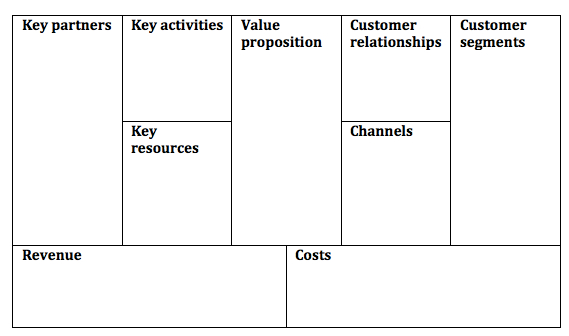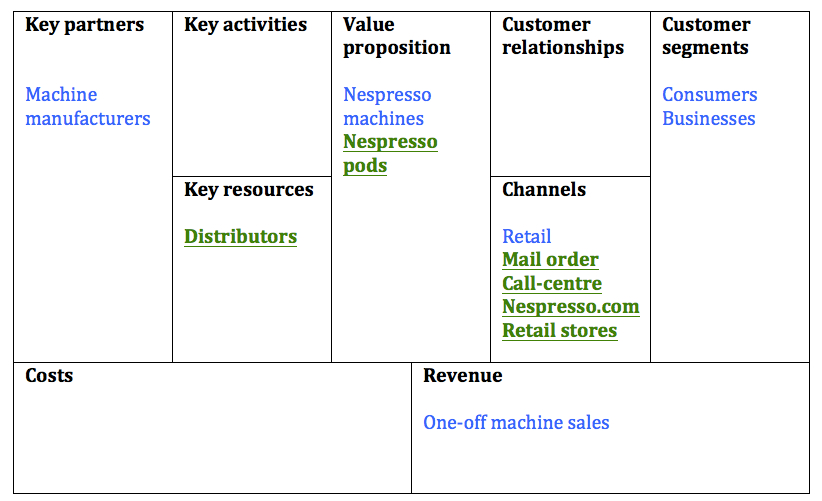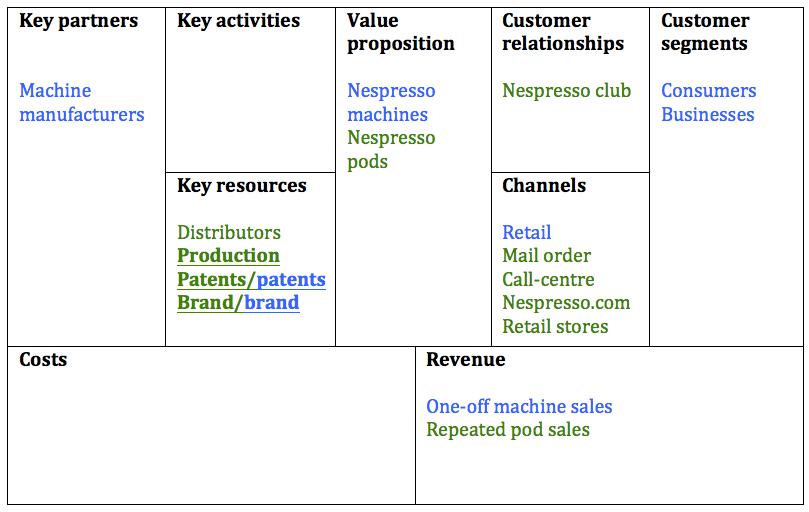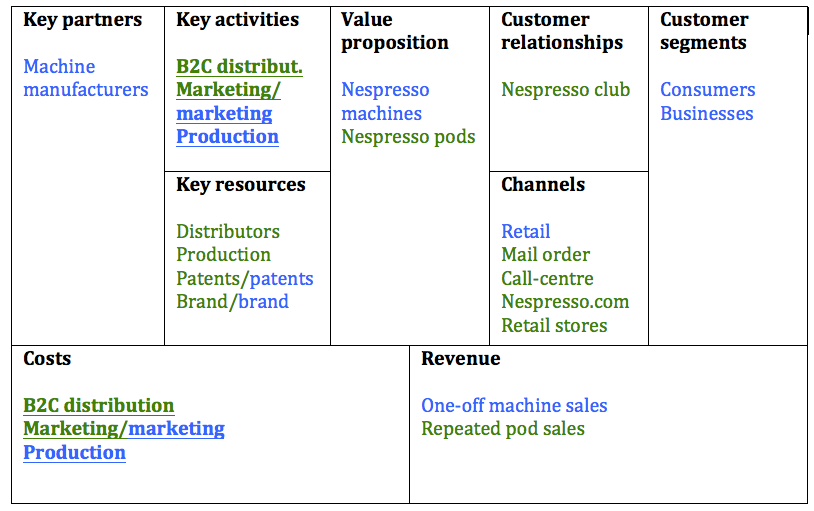Nespresso customers pay 600% more for a cup of coffee than instant coffee drinkers. If that were a cappuccino, you’d be paying around $21.00. How can they command such a huge price premium for a close substitute product?
Nespresso is one of the best examples of business model innovation – meaning how they create, deliver and capture value is substantially different from incubent competitors.
Where most coffee businesses make their product, sell to wholesalers, who then sell to retailers, who then sell to consumers, Nespresso has chosen to take a very different path that has lead to them to redefine how we drink coffee at home.
Some areas in which Nespresso has really changed the game include:
- Profit model – using the ‘razor-and-blade’ pricing strategy made famous by Gillette, Nespresso customers make a one-off investment in their machine (‘the razor’) followed by ongoing and repeated purchases of coffee pods (‘the blades’)
- Product performance – Nespresso machines have won numerous design awards for their effortless usability and their taste, aroma and quality standards for their coffee pods means they only use 1-2% of the world’s best green coffee.
- Buying channels – completely re-imagining how we buy coffee for home, Nespresso pods can only be bought through mail order, call centre, Nespresso.com and their elegant Nespresso retail stores
- Brand – George Clooney is the brand ambassador, need we say more?
- Customer engagement – over 70% of Nespresso’s staff have direct contact with customers resulting in strong customer advocacy (over 50% of new Nespresso Club Members are introduced by family and friends)
To analyse Nespresso’s innovation success, we’re going to use a very simple yet powerful tool called the Business Model Canvas, which can be used to define the building blocks of any business model on a single page as shown below:

I’ve used blue text to show Nespresso’s strategies for the machines, green text to show strategies for coffee pods and have boldened and underlined things added to each new Business Model Canvas.
Nespresso Business Model Canvas #1
Nespresso’s initial strategy was to sell their machines through third-party retail channels. They earned money from one-time machine sales, which would be passed to their partners making the machines.
The plan for selling through third-party retailers was to get their machines into as many households as possible.

Nespresso Business Model Canvas #2
For their coffee pods, Nespresso used a completely different strategy. Instead of third party retailers, they chose to sell only through their own channels – mail order, call centres, Nespresso.com and their own Nespresso brand retail stores – with great investment of cost, time and effort.

Nespresso Business Model Canvas #3
Why did they do this? Because once you have a Nespresso machine at home, you buy their coffee pods again and again and again.
With no middle-man, all the coffee pod revenues go straight to Nespresso and they earn much better margins by selling directly.

Nespresso Business Model Canvas #4
Some key resources were required to make this approach work. Firstly, Nespresso had patents on both their machines and coffee pods, which they defended for a very long time. Secondly, selling directly to consumers meant that they had to build up a substantial brand presence. And thirdly, they had to build high-end production facilities to produce the best coffee pods possible.

Nespresso Business Model Canvas #5
This was the first time that Nestle (Nespresso’s parent company) had sold direct to consumers so they had to learn how to do B2C distribution and brand marketing really, really well. Also their brand promise was for a high-end drink at home experience so their coffee production had to be world-class. While each of these key activities was expensive and difficult, they allowed Nespresso to successfully execute on a completely new and innovative business model.

By changing up just a few elements, Nespresso completely redefined the drink at home coffee market. Consumers love the Nespresso experience, the segment is highly profitable and they have an undeniable lead against the competition.
Try experimenting with your business model by following these five simple steps:
- Get your team together in a creative space
- Print out a really large copy of the Business Model Canvas
- Have an open discussion about your business model
- Use PostIt notes to fill in each of the boxes
- Change up some elements by asking questions like: What if our key assumptions were not true? Is there a smarter/quicker/cheaper way of doing what we do? What would our biggest, baddest imaginary competitor do?
The kicker to the Nespresso business model innovation story is that the business was actually founded in 1986 – now thirty years ago!
We know you can innovate faster than that.
Your time starts now. You can download your copy of the business model canvas directly from our website.
If you’d like to identify and commercialise a business idea through the Business Model Canvas, contact us today
You can also learn more about innovation strategy by discovering the 5 elements you need in an innovation strategy.
facebooktwitter
Join 10,000 others who want the latest insights, tools, tips and resources. We help you get better results by staying on top of the latest methodologies and thinking.












